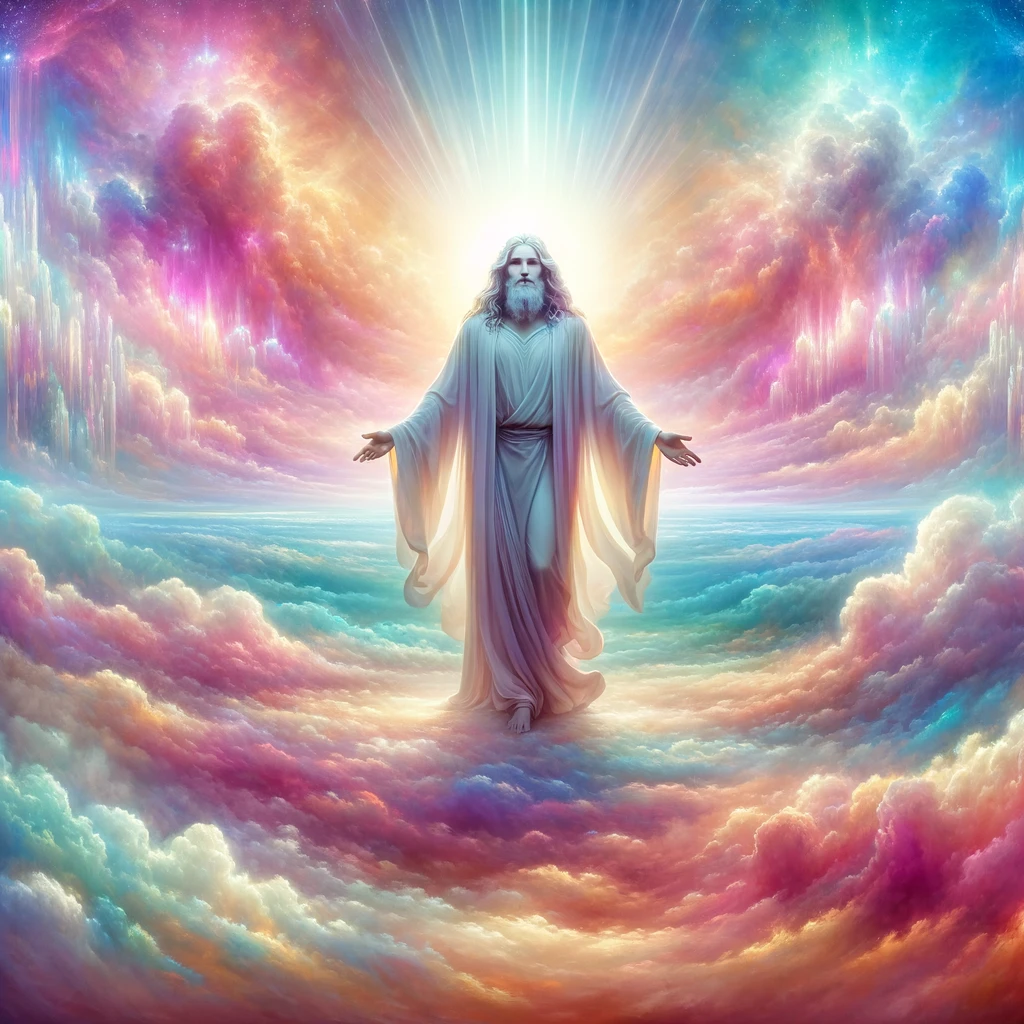Since we’ve used the term “near-death experience,” for so long, maybe it’s time to bring forth a new one, such as “crisis event” (which medical techs prefer) or better, “crossover experience.” That last one has a nice easy ring to it.
And it’s what’s used in a new book by researcher D. J. Kadagian called precisely that: Crossover Experience: Life After Death, 100 Exceptional Near Death Experiences (with two co-authors: one a medical doctor , the other a PhD). We’re making it available [below] despite standard disclaimers that such compilations occasionally include extra-religious (New Agey) belief systems.
Take what is good and leave the rest, the Bible (1 Thessalonians 5:21) instructs us.
Do your best and then leave Him the rest, is another saying, and such lessons spring forth from pages of fascinating books like this, as do the always-engaging depictions of landscapes, feelings, and colors on the “other side.” Remarkable it is, how consistently people who cross over describe it as being far easier than they ever conceived, and, if in a good state of spirit, the most pleasant experience ever. No fear at all. The majority of those who encounter the hereafter find the death transition itself to be remarkably comforting (even if the destination may be what we call purgatory).
“I was enveloped in pure love, a feeling that I cannot describe — pure love and peace and well-being, safety,” says one testimony. “A glowing love like no other: I can’t describe how wonderful it was.
“It was God. There is a God, a supreme being, the One. When I looked into His Eyes, all the secrets of the universe were revealed to me. The universe was created right in front of my eyes.”
The most famous researcher in this domain, Dr. Raymond A. Moody, once commented, “Over the years I have discovered NDEers with all sorts of religious backgrounds. Some people tell me that before the experience they didn’t believe in God. Others say that they were very religious. The interesting thing is that after the NDE, the effect seems to be the same: people who weren’t overtly religious before the experience say afterward that they do believe in God and have an appreciation for the spiritual, as do the people who believed in God all along.”
As another near-deather recalled, “These people started guiding me down this pathway, and this pathway was the most beautiful experience I could ever imagine. The thing that absolutely speaks to my soul — moves me to tears — is color. The intensities of colors. The intricacies of flowers. The aromas that spoke of beauty.
“This pathway was not only woven together with fibers of God’s Love but exploded with every color of the universe and some that don’t exist here. And flowers — there were too many to count. And these beautiful aromas — I was experiencing them all at once. There again there was a shift in time so that I could see it and understand the colors and hear the colors. I know that doesn’t make sense, but that’s what it was like.”
As we have heard elsewhere, there is a bright mist permeating everything in some near-death scenes, with “an overall whiteness and brightness about it. The water was so sparkling clean. I remember wanting to bend over and take a drink from the stream that was running through this garden we were walking through. When I tried to scoop up the water in my hands, the water ran through my hands, literally, and it wasn’t wet. I felt this overwhelming desire to experience everything about this garden.”
Mist is not nearly as common as straightforward brilliance — light. Everything radiates God’s goodness. Coruscant tendrils, let’s say. This is no fable. Simple wishful thinking: No.
“I was in a landscape of pure, shimmering, golden-white, coruscating, and living light. It was like a conscious, loving light. There were no horizons; no up or down, no far away or close. I was in a place that was utterly peaceful, still, calm, safe, loving, and nurturing. It was a relief to be there. It was as if I was held by the light and the love emanating from the light. I couldn’t move out of it but didn’t want to either.”
Another who studied “crisis events,” Dr. Reggie Anderson, recalled a distinctive aroma associated with those who seemed to be “on the other side” in hospitals.
“The smell of Heaven is completely different,” he wrote. “Nothing on earth is quite like it. It is both citrusy and flowery, yet neither bouquet overpowers the other. It’s so light and fresh, with hints of lilac and citrus, like the smell of spring as it teases the senses before bursting into its fullest fragrance.”
We call it the “aroma of sanctity.”
Most important: the lesson of love. It is the key “takeaway”: how life on earth is for us to learn to love.
All else is a waste of precious moments.
And the life review, emblematic of so many such cases?
The book has snippets from dozens of people who aren’t identified. One said, “I began to see events appearing along the surface of a million large-screen TVs or panels lining the walls, but that is a poor description of what I really experienced. The events seemed to surround me from all sides. Within a few seconds I realized it was my life, memories, and events that only I would understand and put meaning to.”
Last: “I saw myself doing everything and anything that I had ever done in my entire life. I saw who I was.”
[resources: Crossover Experience: Life After Death (100 Exceptional Near Death Experiences and Michael Brown online retreat, Saturday 2/10]



